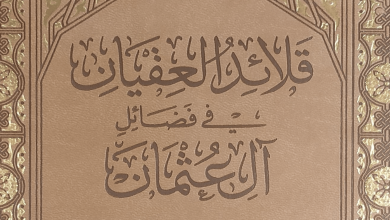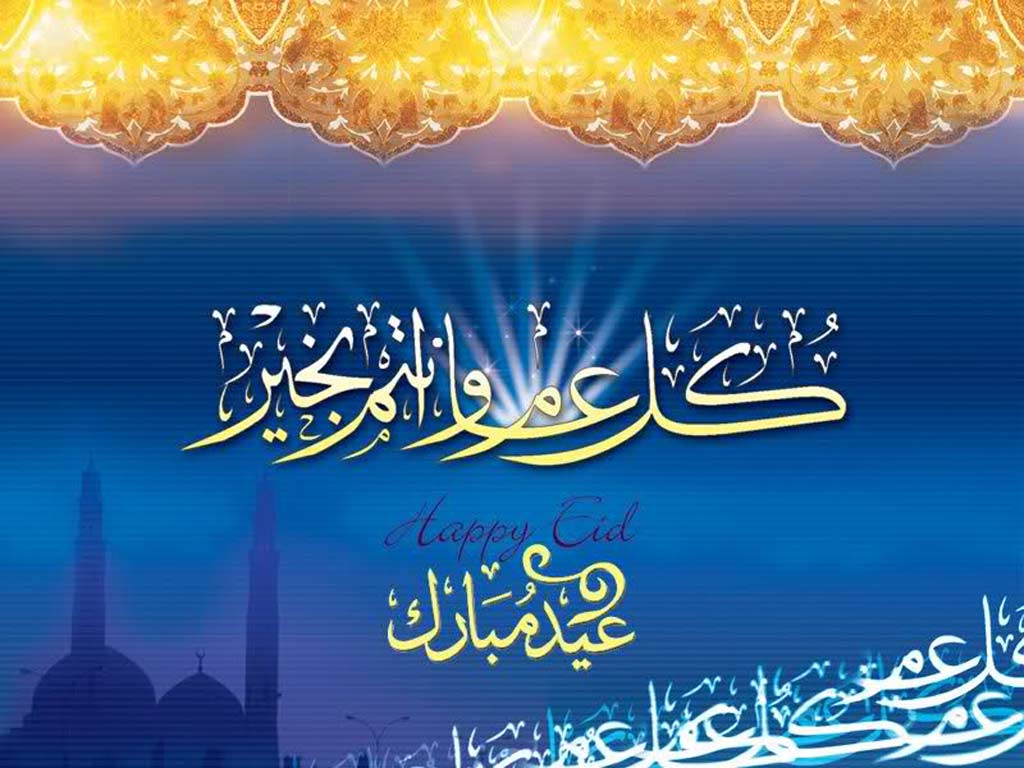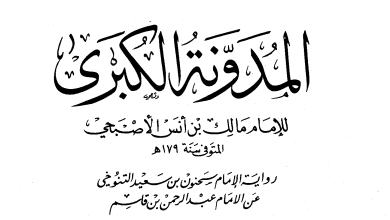When Is a Hadith Suitable for Practice?
The following is an excerpt from our abridged translation of the masterpiece, Athar al-Hadīth al-Sharīf fī Ikhtilāf al-A’immah al-Fuqahā’, by the Syrian Hadīth scholar, the teacher of our teachers, Shaykh Muhammad ‘Awwāmah. There were numerous requests for an abridged translation of the work for the benefit of non-Arabic readers, as the original work is relatively lengthy. We will post sections of it in installments and finally publish the complete abridgement in a separate post. We have previously posted two sections from the middle of the book. We will now post excerpts from the beginning of the book in sequence.
The excerpt before you is the preface and first section of the book. There is no need to expound on the outline, objectives, and theme of the book as the author himself has tended to this in the preface. One can understand the importance of the work by looking at its title, “The influence of the noble Hadīth upon the differences of the jurist Imāms.”
In this section, the author first explains the status of the blessed Hadīth in the hearts of the Imāms. By doing so, he shows that the objective of the Imāms in their differences and choosing some evidences instead of others was solely the pleasure of Allāh and the preservation of His din.
Thereafter, the author discusses the first of four reasons of differences among the jurists i.e. when is a Hadīth suitable for practice. He demonstrates how the task of ascertaining whether a Hadīth is suitable for practice is not simple, as the scholars differ regarding many aspect of a Hadīth, some relating to its chain and others relating to its text. Moreover, he briefly discusses the multiple uses of a weak narration and refutes the misunderstanding that a weak narration is similar to a fabricated one.
It is important to remember that this is only an abridged translation. Therefore, many sections were omitted and some were summarized. Those who are interested in more detail are advised to read the original work. To make the article more reader-friendly, an idiomatic translation was adopted in several places.
Muntasir Zaman
Ramadān 3, 1435
Athar al-Hadīth al-Sharīf fī Ikhtilāf al-A’immah al-Fuqahā’
(The Influence of the Noble Hadith upon the Differences of Jurist Imams-Abridged Translation)
By Shaykh Muhammad ‘Awwamah
Translated by Muntasir Zaman
Preface
Undoubtedly, the subject: the reasons for differences amongst the jurists, is of utmost importance in the academic and practical life of every Muslim.
In terms of its importance in his academic life, it acquaints a Muslim with the expertise of the Imāms of Islām in deriving the laws of this true religion from its original source: the Book of Allāh and the Sunnah of His Messenger. It also acquaints him with the great effort they exerted in this [form of] derivation, among other aspects.
In terms of its importance in his practical life, it instills within a Muslim a state of tranquility and contentment towards the Imāms of his religion, to whom he has submitted the affairs of his worship, dealings, character, and conduct and made them an intermediary between himself and Allāh in all of these aspects.
This tranquility will only be acquired after he is acquainted with the reasons of their differences, within his capacity, and understands that they only differed in search of the truth. This was after establishing principles and formulating rules; thus, they agreed upon what was possible for them to agree upon, and they differed when they had no other option. There is no blame upon them in doing so, because they are students of truth and seekers of evidence. They did not differ for any worldly motive.
The subject: the reasons for differences amongst the jurists, is an introduction to one dimension of ijtihād, due to which such a discussion is difficult, lengthy, and complex. Therefore, it is necessary to discuss only one aspect of the discussion.
The aspect that I wish to discuss, for which I seek the assistance of Allāh, is: The influence of the noble Hadīth upon the differences of the jurist Imāms.”
The layout of the discussion is as follows:
- Introduction: The status of Hadīth in the hearts of the Imāms
- The First Reason: When is a Hadīth suitable for practice
- The Second Reason: Differences regarding the understanding of the Hadīth
- The Third Reason: Different methods of dealing with apparently conflicting aspects of the Sunnah
- The Fourth Reason: Differences due to their varying knowledge of the Sunnah
Moreover, there are doubts that many people have difficulty in understanding an answering, which I will discuss in the appropriate sections from those mentioned.
The Status of Hadīth in the Hearts of the Imāms
It is essential that we present a brief introduction that will shed light on the lofty status of the blessed Hadīth in the hearts of the Imāms, by which we can gauge their relentless zeal to adhere to it and strong desire to practice upon it.
- Imām Abū Hanīfah [d. 150 AH] says, “People will remain on goodness so long as among them are those who seek Hadīth. As soon as they seek knowledge without Hadīth, they will become corrupt.”[1]
- Imām al-Shāfi‘ī [d. 204 AH] says, “Which land will carry me if I narrate a Hadīth and practice contrary to it.”[2]
- Imām Mālik [d. 179 AH] says, “The Sunnah is the ark of Nūh; whoever boards it will survive, and whoever remains back will drown.”[3]
- Imām Ahmad [d. 241 AH] says, “Whoever discards the Hadīh of the Messenger of Allāh (peace and blessings be upon) is on the verge destruction.”[4]
These are but a few statements, which all indicate to one objective: the necessity of adhering to the Sunnah. Whoever practices upon it is successful, and whoever abandons it is disgraced.
When this understanding towards the all the Imāms settles in the heart, it becomes easy to search for the causes of their difference. Conversely, when a person does not attest to the status of these Imāms-instead he says, “they are men and we are men”- or he does not believe that they rigorously exerted themselves in search of evidences to follow will disregard this discussion and will haste in criticizing them and demonstrating his academic superiority over them.
After this introduction, I will now discuss the underlying causes of the differences of the Imāms.
The First Reason of Difference: When Is a Hadīth Suitable for Practice?
This discussion will cover four points, two of which deal with the chain of narrators (sanad) and two that deal with the text of the Hadīth (matn):
- Differences regarding the conditions for the authenticity of a Hadīth
- Is it necessary for a Hadīth to be authentic to practice upon it
- Establishing the prophetic wording of the Hadīth
- Establishing the correct Arabic vocalization
Concerning the first point, the vast majority of scholars are unanimous that the perquisites for the authenticity of a Hadīth are five: continuity of the chain, righteousness and accuracy of the narrators, and the absence of hidden flaws and anomalousness in the chain and text.
- Continuity of transmission (al-ittisāl).
There is a well-known difference of opinion between Imām al-Bukhārī [d. 256 AH] and Imām Muslim [d. 261 AH] on an issue of al-ittisāl termed “the issue of meeting (mas’alat al-liqā’).” Imām al-Bukhāri deems it necessary for a Hadīth to be classified as continuous (muttasil) that each of its narrators met his teacher [from whom he is narrating] at least one time. On the other hand, Imām Muslim is of the opinion that the mere possibility of them meeting is sufficient to classify the chain as continuous [although we cannot prove that they physically met]. Since the definition of sahīh will vary on the definition of al-ittisāl, those who opt for the view of Imām al-Bukhārī in “the issue of meeting” will not consider those narrations to be sahīh, which have been authenticated based on the opinion of Imām Muslim in “the issue of meeting.”
Another issue relating to the continuity of transmission, which increases the scope of difference in comparison to the previous issue, is the mursal Hadīth.
A mursal Hadīth i.e. what a Tābi‘ī ascribes to the Prophet (peace and blessings be upon him), is not muttasil [i.e. due to the missing link between the Tābi‘ī and the Prophet]. Will this affect the Hadīth and render it unsuitable for evidence?
The majority of Hadīth scholars are of the opinion that a mursal Hadīth is weak and unsuitable for evidence whereas the majority of jurists-among whom is Imāms: Abū Hanīfah, Mālik, and Ahmad’s one view- that it is suitable for evidence and practice. Imām al-Shāfi‘ī has taken a middle path and regards it as slightly weak; thus, if it is supplemented by one of the supporting factors it becomes suitable for evidence.[5]
Accordingly, the majority of the Hadīth scholars and al-Shāfi‘ī will disagree with the juristic ruling that the three Imāms or one of opine based on a mursal Hadīth that is not supplemented by one of the four supporting factors. [It should be noted that] the number of mursal Ahādīth are not meager.
- Establishing the uprightness of the narrator
The factors that influence a Hadīth scholar in classifying a narrator as upstanding is numerous. For example, some would argue that the approval of one expert Hadīth scholar is sufficient to classify a narrator as upstanding whereas others may argue that the approval of two is necessary. Accordingly, those who do not consider a narrator, who has transmitted fifteen narrations, as upstanding because only Hadīth has approved of him will not accept all fifteen narrations even though others who consider the approval of one Hadīth scholar as sufficient will accept all his narrations.
- Similarly, the scholars differ in the remaining prerequisites of authenticity
It will be beneficial to point out a condition for the accuracy of a narrator laid out by Imām Abū Hanīfah: the continuous retention of the Hadīth from the time the narrator heard it until he imparts it to others without any point of forgetfulness in between. What motivated Imām Abū Hanīfah to place such a stringent condition was the inconsistency and alteration he noticed from the transmitters of Hadīth. Accordingly, he will differ with other scholars concerning the authenticity of the Hadīth based on this.
In light of these brief gestures to the essential issues of accepting and rejecting Hadīth, it becomes easy for the reader to understand the inaccuracy of the statement of Shaykh ‘Abd al-Wahhāb Khilāf in his book, Masādir al-Tashrī‘ fī mā lā Nassa fīhi, “it is easy to recognize whether any Hadīth is mutawātir or not; whether it is authentic, sound or weak.”
Thereafter, I came across a dialogue that exposes the falsity of this misunderstanding and other [misunderstandings] that those who encourage ijtihād often repeat. Imām Abū al-Qāsim al-Burzulī [d. 844 AH] relates:
Ibrāhīm ibn Khalaf al-Bājī met Ibn Hazam al-Zāhirī who told him, “What have you studied under your brother [i.e. Abū al-Walīd al-Bāji]?” He replied, “I have studied many books under him.” He –Ibn Hazam- told him, “Shall I not condense knowledge for you such that it will teach you what you can benefit from in a short span of time, a year or less? He –Ibrāhīm- said, “If this were true…[6]would have done it.” He told him, “What about one month?” He said, “That is more desirable to me.” He said, “What about one weak or one moment?” He said, “This would be the most desirable thing for me!”
Ibn Hazam told him, “If you ever come across an issue, evaluate it in light of the Book of Allāh; otherwise, evaluate it in light of the Sunnah; otherwise, evaluate it in light of the issues of consensus. If you find it [then well and good], otherwise the original position is permissibility, so go ahead and do it!
Ibrāhīm al-Bājī said, “What you are advising me to do requires a lengthy life and vast knowledge, because it requires knowledge of the Qur’ān: its abrogating and abrogated verses; its interpreted, apparent, and explicit verses; and its general and specific verses, among other laws relating to it. It also requires memorization of Ahādīth; knowledge of its authentic and weak; its musnad, mursal, and mu‘dal; and the historical dates of the earlier and later reports etc. It also requires knowledge of the issues of consensus and searching for them in all the lands of Islām, which very few people are capable of doing.[7]
Concerning the second point [i.e. is it necessary for a Hadīth to be authentic to practice upon it], the scholars are unanimous that when a narration reaches the status of sahīh (authentic) or hasan (sound) it is suitable for practice and adducing as evidence in legal injunctions. As for a da‘īf (weak) narration, the vast majority of scholars are of the opinion that in issues of virtue and recommended acts there is scope for employing weak narrations provided that the necessary conditions are met.
Furthermore, some scholars even opine that a narration can be employed in legal injunctions, such that they even give precedence to it over Qiyās (analogy), which is a legitimate source [of deriving legal injunctions] and is relied upon by the vast majority of scholars. This is the view of Imāms: Abū Hnīfah, Mālik, Ahmad,[8] Abū Dāwūd, al-Nasā’ī and Ibn Abī Hātim et al. when two conditions are met: the weakness should not be severe, and it is the only available material on the subject.[9]
‘Abd Allāh ibn Ahmad ibn Hanbal asked his father, “A person is in need of a ruling but resides in a city where he can only locate a Hadīth scholar, who fails to distinguish between authentic and unauthentic narrations, and people of legal reason. Who should he ask?” His father replied, “He should ask the Hadīth scholar not the people of legal reason; a weak narration is stronger than legal reason.”[10]
Further, a weak narration has another function: when a particular narration has two interpretations and no interpretation is preferred and there exists a weak narration that supports one of the interpretations, we will employ the weak narration to give preference despite its weakness.
Concerning the application of this function, Ibn al-Qayyim [d. 751 AH] explains that in the verse of the Qur’ān “ذلك ادني الا تعولوا” the scholars differ regarding the meaning of تعولوا because there is two possible meanings. The first meaning, as Imām al-Shāfi‘ī opines, is a large family [thus, the translation would be “that is more suitable that you may not have a large family.”] The second meaning, as the vast majority opine, is injustice [thus, the translation would be “That is more suitable that you may not incline to injustice.”] The vast majority give preference to the second meaning for several reasons among which is the presence of a weak narration that supports it and that is sufficient to give preference.[11]
In light of the above, it becomes clear that we will not discard a Hadīth simply because it is weak, as it has multiple functions in contrast to what some advocate, because they have totally discarded it and equated it to a fabricated narration.
As for the third point [i.e. establishing the prophetic wording of the Hadīth], the purpose of clarifying this issue is due to the possibility that the narrators have transmitted the Hadith with a variation in the wording. Obviously, this is in the scenario where a Hadith is transmitted with multiple wordings, and the rulings deduced from the Hadith will vary based on the separate wording. Among the Hadith scholars and the theoreticians, this form of transmission is referred to as Riwāyat al-Hadīth bī al-Ma‘nā (non-literal transmission of Hadīth).
The majority of scholars are of the opinion that Riwāyat al-Hadīth bi ‘l-Ma‘nā is permissible on condition that the narrator is well versed in the Arabic language and has a deep understanding of its usages. This is to prevent a narrator from making a non-literal transmission of a Hadith by altering its words assuming that the original text and its variation are similar, when they are not.
Imām Abū Hanīfah places an additional condition: the narrator must be a jurist, so that he fully comprehends the consequences and alterations due to changing the words.
By way of illustration, Abū Hurayrah (Allah be pleased with him) narrates that the Messenger of Allah (peace and blessings be upon him) said, “Whoever performs Salāt al-Janāzah in the Masjīd, there is no harm [فلا شيء عليه].” The same narration is also reported with the following variation, “there is no reward for him [فلا شيء له]. Accordingly, those who gave preference to the first variation, such as Imām al-Shāfi‘ī, have opted for the permissibility of performing Salāt al-Janāzah in the Masjid. On the other hand, those who preferred the second variation, such as Imām Abū Hanīfa, disliked performing Salāt al-Janāzah in the Masjid.
It is for this reason that scholars prefer the narrations of the jurists. In this regard, ‘Allāmah al-Rāmahurmuzī [d. ca. 360 AH] writes:
Once Imām Wakī‘ ibn al-Jarrāh asked his students, “Do you prefer [this sanad] al-A‘mash, from Abū Wā’il, from ‘Abd Allah ibn Mas‘ūd, or [this sanad] Sufyān al-Thawrī, from Mansūr, from Ibrāhīm, from ‘Alqama, from ‘Abd Allah ibn Mas‘ūd? They replied, “Al-A‘mash from Abū Wā’il is shorter!” He told them, “Al-A‘mash is a shaykh and Abū Wā’il is a shaykh whereas [the second chain] Sufyān al-Thawrī, from Mansūr, from Ibrāhīm, from ‘Alqama, from ‘Abd Allah ibn Mas‘ūd is a jurist from a jurist from a jurist from a jurist.
While discussing the factors the give preference to a report, al-Khatīb al-Baghdādī writes:
It will be given preference if the narrators are jurists, because the attention of a jurist towards issues relating to legal injunctions is more than others.[12]
Thereafter, he mentions the incident of Wakī‘ mentioned above and adds the following words of Wakī‘, “A Hadīth that the jurists circulate is better than what the Shuyūkh circulate.”
As for the fourth point [i.e. Establishing the correct Arabic vocalization], it is necessary for us to determine how the Messenger of Allāh (peace and blessing be upon him) pronounced the words of the Hadīth, i.e. with a dammah, fathah, or kasrah. We already understand the subtle nature of the Arabic language and the severe consequences of the slightest grammatical change.
Ibn Qutaybah [d. 276 AH] writes:
The Arabs have a concept known as al-i‘rāb [diacritical marks], which Allah has used to beautify their speech and differentiate in some instances between two similar statements and differing meanings. For example, in a situation where the subject (al-fā‘il) and object (al-maf‘ūl) both can be attributed to the verb, we can only ascertain which one is correctly attributed to the verb with al-i‘rāb. One person says, “هذا قاتلٌ أخي” with al–tanwīn and a second person says, “هذا قاتلُ اخي” with al-idāfa; the difference between the two statements is that one has al-tanwīn and the other does not whereas the first statement means that he did not kill him and the second statement means that he already killed him. [13]
A specific and practical example is the issue of slaughtering a baby animal that comes out of its slaughtered mother. When a person slaughters a pregnant sheep according to Shar‘ī laws, and the child comes out dead, is the child Halāl even though it was not slaughtered considering that that mother was slaughtered?
In al-Nihāyah, Ibn al-Athīr [d. 606 AH] writes:
The Hadīth [i.e. ذكاة الجنين ذكاة أمّه] has been transmitted with a dammah as well as a fathah. Those who narrate it with a dammah regard it as the predicate of the subject, which is “ذكاة الجنين “ and thus the slaughtering of the mother will suffice for the slaughtering of the child. According to those who narrate it with a fathah it would mean that the slaughtering of the child is like the slaughtering of its mother [14] or that the baby animal should be slaughtered like the mother was slaughtered. Accordingly, the baby animal will not be Halāl unless it comes out alive after which it is slaughtered. Some people narrate both words [i.e. ذكاة الجنين ذكاة أمّه] with a fathah i.e. slaughter the animal like the slaughtering of its mother. [15]
Imām al-Shāfi‘ī and others have taken the famous report and that is when the word ذكاة has a dammah in both instances. On the other hand, Imām Abū Hanīfah and others have taken the other two reports. Each party has substantiated their view with other evidences.
————————————————————————————————-
[1] Al-Sha‘rānī, al-Mīzān al-Kubrā, 51:1
[2] Al-Subkī, Ma‘nā Qawl al-Imām al-Muttalibī, 73
[3] Al-Suyūtī, Miftāh al-Janna, 76
[4] Ibn al-Jawzī, Manāqib al-Imām, 172
[5] See al-Risālah, 463. The four supporting factors are 1. It is narrated with a continuity in its transmission 2. It is narrated via a separate mursal route 3. Some of the Sahābah have passed a verdict on it 4. The majority of the people of knowledge have passed a verdict on it.
[6] The following words are not clear in their meaning.
[7] ‘Ulaysh, Fath al-‘Alī al-Mālik, 101:1
[8] Ibn al-Humām, Fath al-Qadīr, 417:1 [Taba‘ Mustafā Muhammad]; al-Nawawī, al-Adhkār, 7 [Taba‘ Bābī al-Halabī]; al-Shinqītī, Nashr al-Bunūd, [Taba‘ al-Maghrib] 63:2
[9] Al-Sakhāwī, Fath al-Mugīth 80, 267:1 [Matba‘a al-Āsima] among other works of ‘Ulūm al-HAdīth.
[10] Ibn Hazam, al-Muhallā, 68:1
[11] Ibn al-Qayyim, Tuhfat al-Mawdūd, 29
[12] Al-Khatīb, al-Kifāyah, 436
[13] Ibn Qytaybah, Ta’wīl Mushkil al-Hadīth, 14-18
[14] In this case, the preposition كاف was omitted and a fathah took the place of the kasrah.
[15] In this case, the first word, i.e. ذكاة الجنين will also get a fathah because the verb ذكّوا (slaughter) was omitted before it.
Ibn al-Athīr, al-Nihāyah, 164:2






